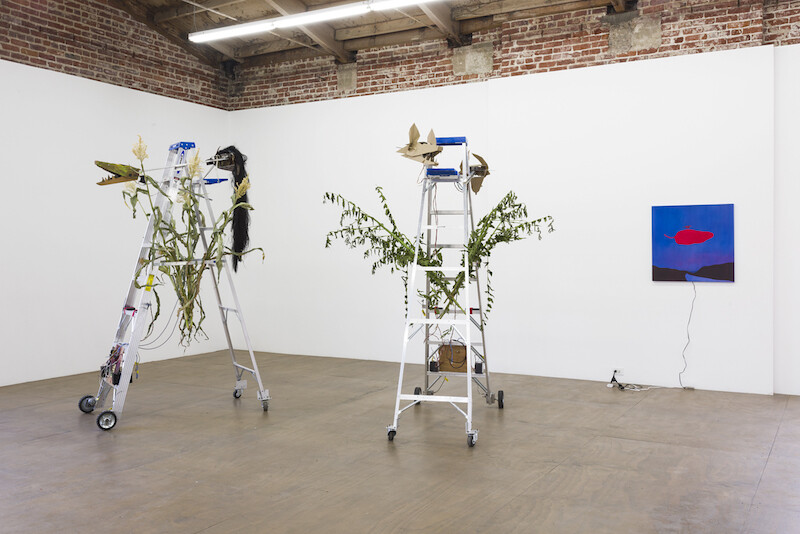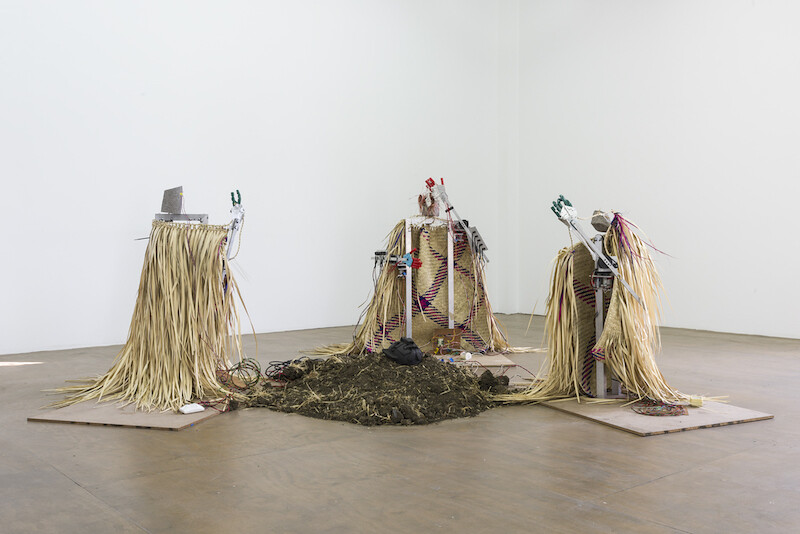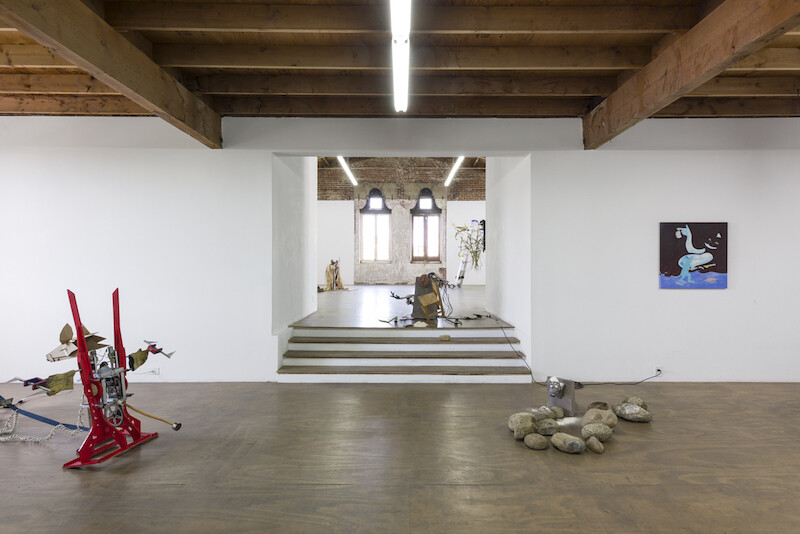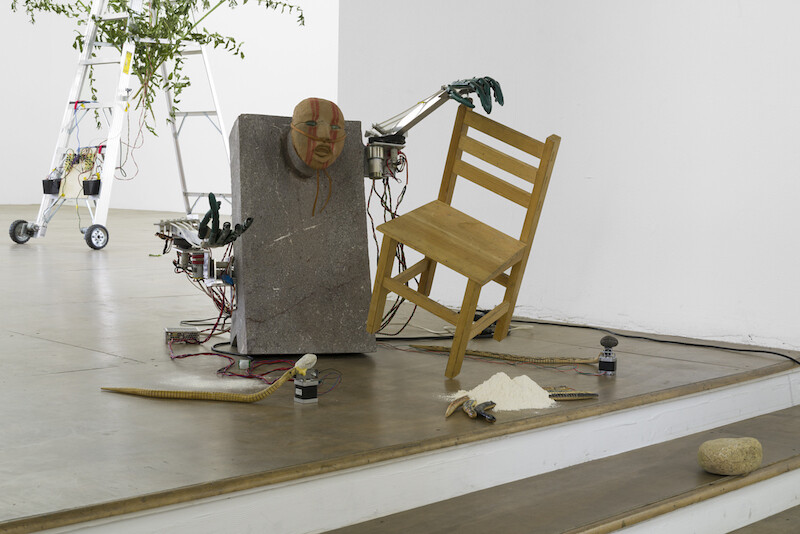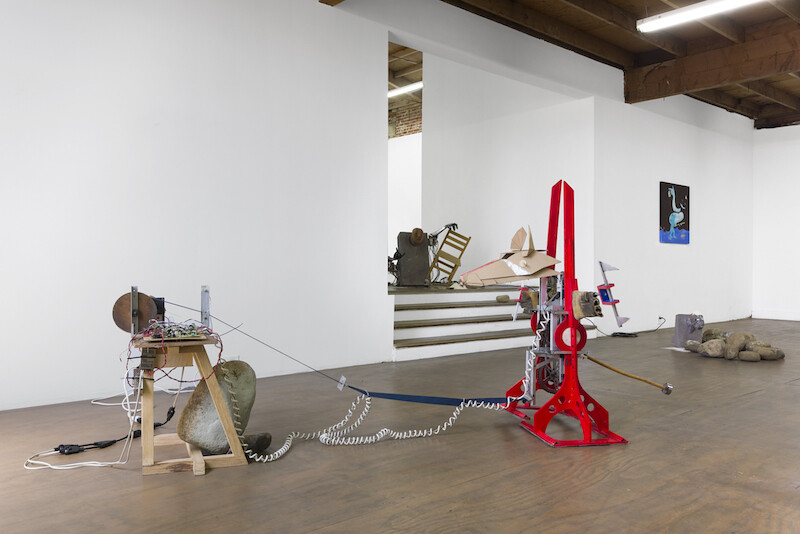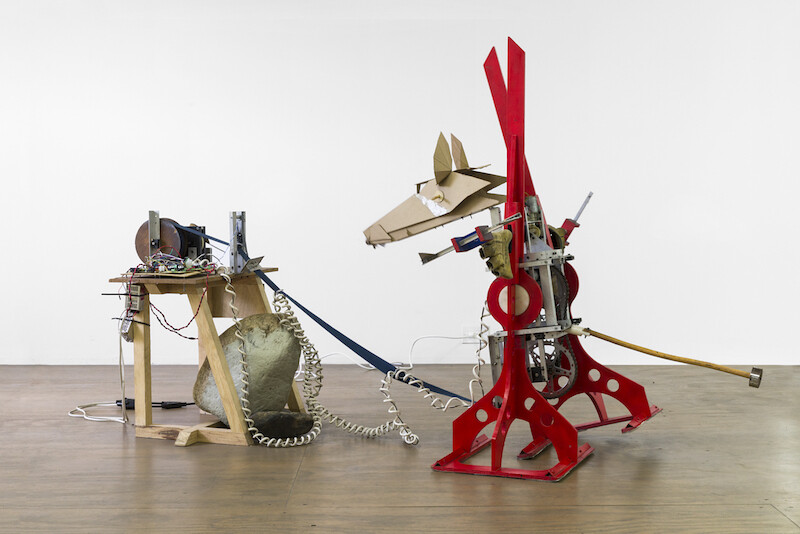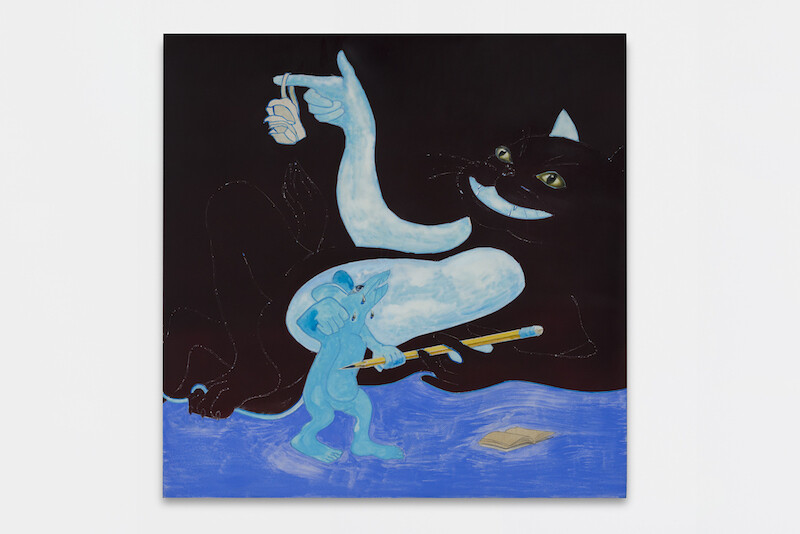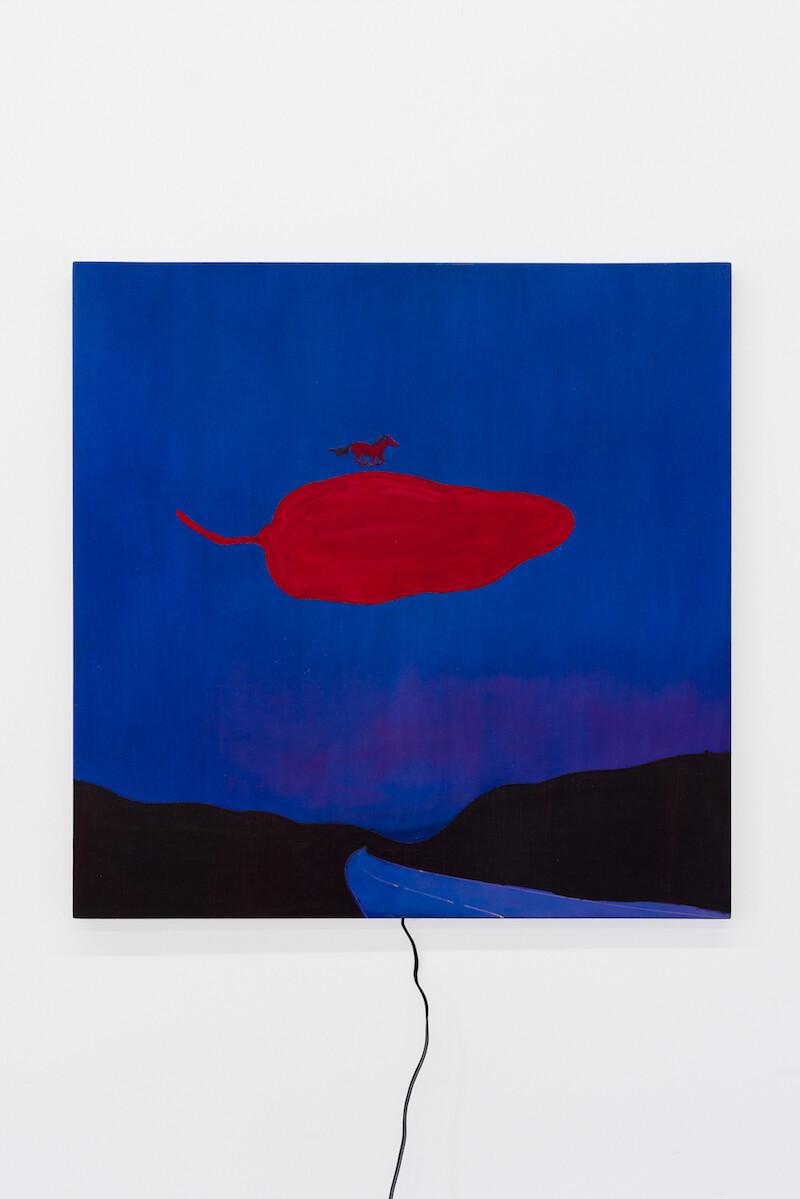The coyote nods to himself, self-assuredly, keeping his eyes steady while his body shifts balance—the motion sensors make his gaze relentless. He brushes his limbs back until he is resting on his hind legs, bracing for a gallop. He retreats, his tail is taut, his front paws are winding up—literally—to ensnare his prey. The kinetic animal in Soldado [Soldier] (2001), an angular cardboard head leading a red metal sketch of a body, can be a stand-in for its creator, artist and engineer Fernando Palma Rodríguez. In the Uto-Aztecan language Nahuatl, the coyote is a mythological animal that fluctuates between wild and civilized states, entering and exiting each side of the divide with sensitivity. Nahuatl tradition also tells us that the heart, yóllotl, has the same etymological root as motion, ollin—and that this dynamism is the defining characteristic of what it means to be alive.1 Sentiment plus movement equals life. Collapsing both variables, the coyote conceives his own life through reactive animation.
Moving past the anxious canine that paces the first level of House of Gaga / Reena Spaulings, Coatlicue / Xipetotec (2018) guards the entrance to the next level. A nearly blank visage with a fleshy mouth rests on top of the goddess’s stone-slab torso, her shoulders and elbows tangles of dangling electrical wires swept up behind her, her long, elegant rubber-hose fingers in repose. Slaves were routinely sacrificed to Xipe Totec—the heart was removed with a stone knife and the skin flayed in one piece from head to toe. The skin was then decorated with feathers and worn for 20 days in a festival. On the floor here, the goddess dangles a wooden chair from her fingertips as gingerly as she would have a new coat of skin. External battery-operated rubber snakes slither around her. Coatlicue’s intensely feminine features suit her status as supreme Aztec goddess—as mother of the moon; the stars; Huitzilopochtli, the left-handed hummingbird, god of the sun and war; and as deity representing the general yet maternal themes of birth, death, and inevitable rebirth. Rodríguez represents her in both literal and poetic form: her myth also embodies fire and earth—the two elements necessary to make the stone of her torso.
Moving past the preeminent deity on the stairs, a trio of cloaked, almost lifesize straw figures converges over a tiny plot of earth of about five square feet, each gesturing their rudimentary, garden-hose hands in disagreement or conviction. Los nahuales (2017) are, in the Mesoamerican folk mythology, shape-shifters, magicians—humans capable of turning themselves into animals, often doing so under the cover of night. They are also protectors of their communities and natural surroundings. More so than Coatlicue / Xipetotec, their humble fabrications of skeletons made from metal rods and electronic circuits, cloaked in woven palm mats and skirts of dried palm leaves, betray sophisticated objectives: what may be considered waste is put to illustrative use, implementing tlasolale, or regeneration, into the life cycle of these materials.
Said to be guided by Huitzilopochtli, various indigenous histories relate that the Aztecs settled at Lake Texcoco, in the Anahuac valley, and constructed an island in the center on which to build the city and monuments of Tenochtitlan. The folk tale continues into the present: the lake basin was eventually drained, and the sprawling Mexico City is now centered in this land. Rodríguez sustains these legends of the Tlamachilliztlatolzazanilli [the account of all that we know]2 on their very lands through his artistic practice as well as through Calpulli Tecalco, a nonprofit organization he runs with his mother, Carmen Rodríguez Meza, and sister, María Angélica Palma Rodríguez, in San Pedro Atocpan, Milpa Alta, an agricultural outskirt southeast of Mexico City. The group aims to restore the area’s natural resources and reclaim rights to land while cultivating its indigenous culture and language well into the Fifth Sun (our current era). This selective grouping of work from the past 12 years shows how ancient, ancestral wisdom is able to not only sustain, but regenerate on to its own ends.
Miguel León-Portilla, Aztec Thought and Culture, trans. Jack Emory Davis (Norman, Oklahoma: University of Oklahoma Press, 1963), 5.
Ibid., 39.

